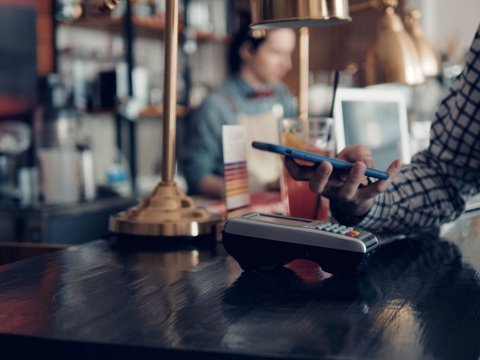Our digital world is constantly expanding, with more and more people and businesses becoming interconnected every day. More than 4.6 billion consumers around the world now shop online, for example. In the EU, one in two citizens uses the Internet to interact with public authorities. Following the introduction of biometric passports, many countries are now enabling their citizens to transfer their ID cards and driver’s licenses to their smartphones. That makes it possible for border controls, traffic checks, and legally binding transactions to be conducted on cell phones. “If you add up all these activities and many others that are performed on the Internet, each person probably has an average of several dozen digital identities,” says Xavier Prost, Head of Product Management at Veridos.
But what exactly is a digital identity? The term refers to the electronic data that depicts a person, an organization, an application, or a device in a uniquely identifiable way. “A digital identity is the set of digital attributes that represent someone or something. When it comes to online activities, it’s vital that people can be uniquely identified as who they say they are – i.e. when they enter into a sales contract online and then transfer money from their bank account or when they log into a company network from a laptop at home,” adds Xavier Prost. Identity fraud has become a billion-dollar industry. Illegal activities in this sector range from the unauthorized use of real identities (e.g. shopping at the expense of others) through the selling of entire customer databases (e.g. for phishing e-mails) to the creation of synthetic, completely fake identities. These activities always involve scammers gaining access to information or data that they otherwise would not have had. In the US, for example, synthetic identity fraud is the fastest growing form of financial fraud.
Giesecke+Devrient is actively helping to reduce identity fraud. Our joint venture with Bundesdruckerei – Veridos GmbH – develops and produces physical and digital identity solutions for customers around the world and ensures their lifecycle management processes are secure. We have a broad product portfolio, with our plant in Athens producing government documents – 45,000 passports and 30,000 ID cards every day – as well as driver’s licenses, visas, and many other items. We also supply customers with access and border control systems (e.g. automated security gates for airports). Also in great demand are e-government solutions, which have proven to be particularly valuable, or indeed indispensable, during the Covid-19 pandemic. Now that government authorities all over the world are closed to the public and not providing face-to-face services, how can people obtain official documents they urgently need, such as vaccination certificates, curfew exemptions, and permits to visit care homes? With the VeriGO® TrueSeal e-government solution, stakeholders use a web portal to issue documents featuring a digital seal of authenticity and a unique number. When this seal is presented together with a physical or digital identity document or driver’s license, the owner of the document can prove its authenticity uniquely and securely. VeriGO® TrueSeal thus enables secure, convenient, and privacy-friendly digital verification of sensitive documents, such as those required during the Covid-19 pandemic.









